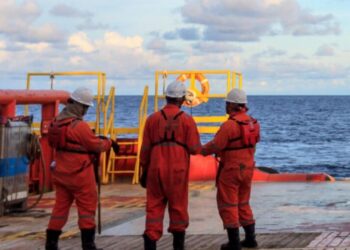During the 2024 SAFETY4SEA Singapore Forum, Capt. Sofyani Faisol, Manager Crewing Tanker, Pertamina Marine Solutions, stressed the importance of providing better wages and safe working conditions onboard, as well as addressing seafarers’ mental health and well-being.
Since its inception, Pertamina has always prioritized the human element. The human element is at the heart of maritime operations, and this is something that no operator must forget.
The shipping market: Key figures at a glance
· Shipping industry’s carbon emissions accounts for only 2% of global carbon emissions.
· World commercial fleet was 105,500 vessels in 2022 and increased to 70 million DWT in 2023.
· It is expected ¼ of new buildings to be equipped with dual fuel engine with the purpose to align with the IMO’s 2025 goals.
· From a recent BIMCO report, the demand for Officers in 2026 is 947,050 and 1,069,500 for Ratings; a 2% and 0.6% increase accordingly.
Training is the key
The world merchant fleet is more technological and larger than ever before. At this point, it is crucial to pinpoint the importance of training. Without training, we see no zero-accident future within the maritime industry.
According to data taken from our database for the years 2019-2023, with nearly 20,000 embarkations of Third Officers, Fourth Engineers and Ratings, the safety training coverage showed an upward trend in the last 5 years. The accident rate for seafarers without training was 2.32 times higher than those who had been trained in 2023.
The future calls for a transformation in industry’s mindset. The decarbonization journey requires new regulations since ship owners and operators are increasingly turning to alter alternative fuels and energy-saving technologies. Furthermore, the rise of automation onboard is paving the way for autonomous and smart ships in the near future.
So how can we prepare for that transformation?
Embracing change
Accidents come to highlight the following alarming trends:
- Fierce competition favors lower budgets over better qualifications, reducing overall talent quality.
- Training gaps to the seafarers are larger and larger
- Unclear career progression is diminishing seafarers’ interest.
In addition, new technologies are increasingly impacting industry, making relevant training essential. Undoubtedly, new technologies will shape the future skill requirements of seafarers. The STCW will likely be insufficient for future generations, given that advancements in fuels, automation, and digitalization present both new challenges and opportunities.
In this regard, training is the golden key to unlocking the digital era in the maritime industry, and simulation training offers a valuable way to improve training consistency.
The key pillars for success
A DNV survey revealed that 52% of seafarers prefer in-person training at maritime training centers, especially those with robust and diverse assessment tools. Additionally, 70% of respondents mentioned that simulation training methods significantly helped with their skills development.
Essentially, simulators replicate real-life conditions on ship equipment, allowing seafarers to develop challenging or otherwise unattainable skills and apply them in real-life situations.
Customization, assessment, precision and training are essential pillars for success in the evolving maritime landscape.
New era of technology
Embracing changes in shipping decarbonization will usher in a new generation of environmentally friendly vessels. Preparing to meet the opportunities created by new energy ship types is essential.
Currently, there is a growing demand for dual-fuel main engine desktop simulators, liquid cargo handling system simulators, dual-fuel engine room ship models, refueling systems, and practical training facilities. These advancements will support the transition toward sustainable maritime practices.
Training is essential now and will continue to be crucial in the future. While investments in simulators may be costly, they are worthwhile, as they enhance onboard safety. In addition to traditional training in navigation, engine room operations, and safety protocols, the modern era demands a new approach. It is now vital for crew members to be informed on topics such as handling lithium batteries and addressing seafarers’ mental health, among other important and timely issues.
Preparing future-ready seafarers
In conclusion, shipowners, crew manning agencies, and training centers form a collaborative community with interconnected roles: shipowners and managers are responsible for allocating training budgets and selecting qualified providers, crew manning agencies ensure that crew members receive necessary training and meet qualification standards, and seafarers seek fair wages and safe working conditions onboard.
Additionally, there is a growing awareness of the importance of mental health and well-being for seafarers. Consistent training is essential to keep seafarers up-to-date with the latest technology, making strong collaboration between shipowners, crew manning agencies, and training centers crucial.
Above article has been edited from Capt. Sofyani Faisol’s presentation during the 2024 SAFETY4SEA Singapore Forum.
Explore more by watching his video presentation here below
The views presented are only those of the authors and do not necessarily reflect those of SAFETY4SEA and are for information sharing and discussion purposes only.


































































